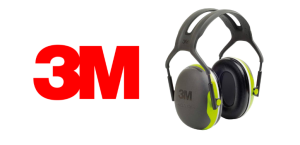By CRM staff
Toronto, Ontario — April 1, 2019 — The stunning results of an animal behaviour study has set tails wagging throughout the automotive industry.
This week, the British Journal of Canine Cognition published the results of a groundbreaking experiment meant to conclusively prove that dogs are capable of learning to drive. Not only did the experiment show that they could, it determined that they are far better at it than people.
“A few years ago, the results of an earlier investigation—which had dogs driving in speed regulated vehicles alongside human instructors—was widely covered by the press, but none of the reports mentioned that this was but the first phase of a much more ambitious project,” wrote the study’s senior researcher Prof. Fenris Drivelle. “In the second phase, the dogs to public roads throughout Europe, driving alone and in fully functional vehicles.”
While citizens of the seventeen European cities where these trials took place may be horrified to discover that they had been sharing their roads with four-legged drivers, the results show that the hounds posed less risk than human drivers.
“After more than four million kilometres of travel, our study shows that dogs are far less likely to be in accidents than human drivers.” Drivelle wrote. “The test subjects were in at-fault accidents just one-seventeenth as frequently as a typical human driver.”
While the study’s results may come as something of a shock in the automotive community, animal behaviouralists are less surprised.
“While people are better learners than dogs, we are also more likely to experiment. While we all know that we are supposed to stop at the sign, many drivers actually perform rolling stops,” Drivelle explains. “Once a dog is taught to come to a complete stop, he does so every time.”
While dog-lovers everywhere are celebrating the news that their best friends may soon become their chauffeurs, the study is being less warmly received by early investors in the autonomous vehicle sector.
“Investors see two problems. Not only are the most advanced autonomous technologies more than two decades away from being able to match the performance of canine drivers, but the lifetime cost of training and keeping a dog is far lower than the cost of the cheapest autonomous system,” said auto analyst Mycroft Woods in an exclusive interview with Collision Repair. “Uber and Lyft have already announced plans to replace their human fleets—not with robots, but with pets.”
It isn’t just ride-hailing app companies that are preparing for a four-legged revolution on the road. Two days after the study’s release, Ford announced the creation of a new subsidiary, RuffRiders, that will provide Ford owner’s dogs with driving lessons.
“It seemed clear to us that the market is ready for dog drivers,” RuffRiders president Hazel Boggs wrote in a press release. “While it will be several months, at least, until governments are able to rewrite laws in order to accommodate canine drivers, we expect to begin accepting students by the summer of 2021.”
While collision repairers might be concerned by the prospect of a sudden reduction of collisions, the community could actually benefit from having more canines behind the wheel.
“Beyond the many business opportunities in retrofitting vehicles for canine drivers, repair facilities can also anticipate other increases in business,” says industry analyst Brad Barker. “Because of their claws, and tendency to chew on the upholstery, vehicles with canine drivers will need far more internal repairs.”
Unfortunately for cat lovers, it is unlikely that their pet of choice will ever be allowed behind the wheel. In 2013, a similar study into feline drivers ended in tragedy after a Maine Coon cat drove a sedan into a fishmonger’s stall.
Happy April Fool’s Day.





































